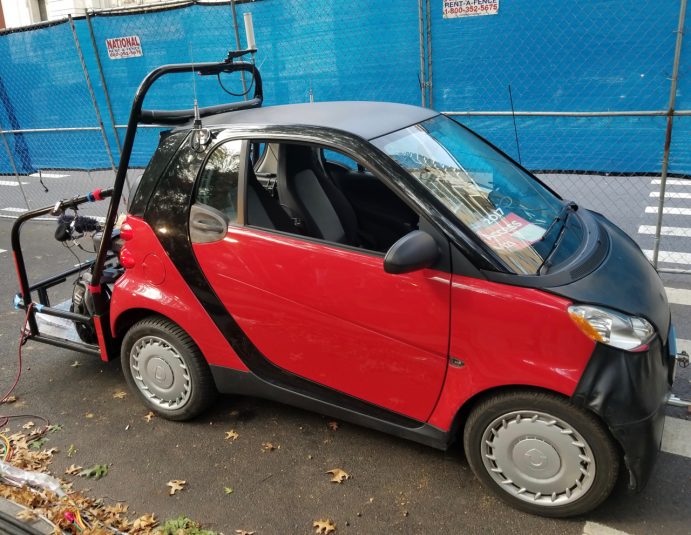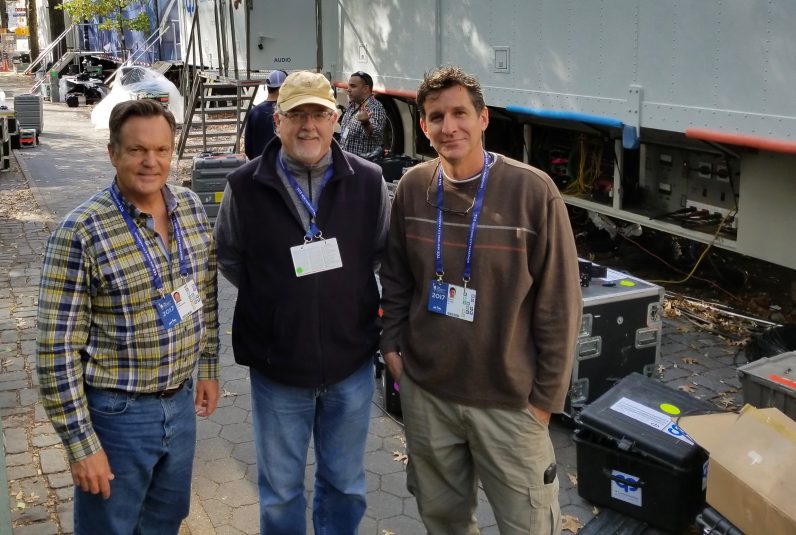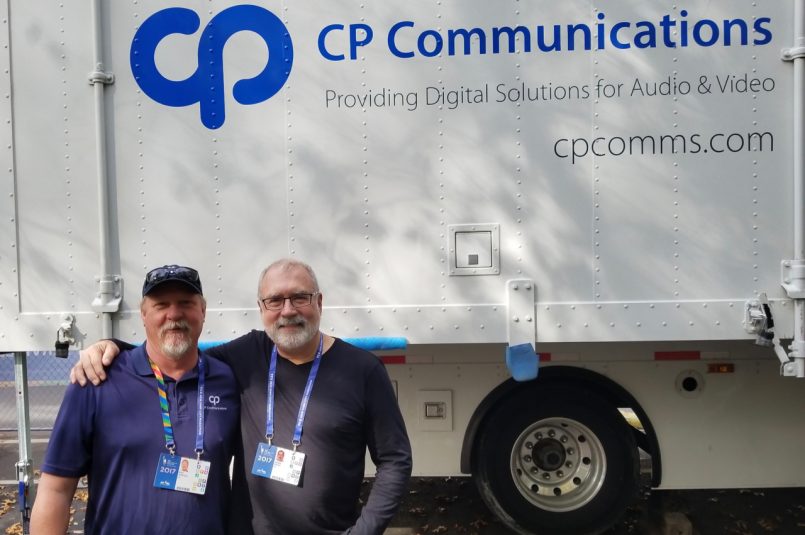Live From the NYC Marathon: CP Communications Runs With New Tech; NEP ND5, Atlantic Power Coverage
Increased reliance on IP, bonded-cellular technologies support large wireless-video effort
Story Highlights
When the TCS New York City Marathon once again takes over the streets of New York’s five boroughs on Sunday, a couple of technical advances, increased reliance on IP and bonded-cellular technologies, and the use of a smart car promise to transform coverage.

A smart car will be used for on-course coverage during the New York City Marathon on Sunday.
NEP’s ND5, Atlantic, Arctic, and ESU units are on hand, and HD 21 from CP Communications is onsite to support the largest wireless-video effort the company has taken on for the New York City Marathon. Six regular motorcycles, three lead trucks, two cameras on wheelchairs, a smart car, and a seventh motorcycle for performance data via SMT will be used to cover the action from the course. The two wheelchair cameras are built by Inertia Unlimited and rely only on bonded cellular for transmission.
NEP’s Atlantic will be at the start line in Staten Island and produce coverage of the start, and ND5, located at the finish line, will be used for the core production of the race.

From left: NEP’s Errol Foremaster, John “JT” Tomlinson, and Dave Greany at the New York City Marathon
“Arctic is being used as a support truck for SMT graphics and world-feed audio while the world feed will be produced out of the ESU, where we have a Grass Valley Korona panel,” says NEP Broadcasting Project Engineer Dave Greany. “ESU also has a lot of fiber, as we are providing fiber for not only the broadcast but the Road Runners, and all the screens are being fed through fiber. The coverage from Atlantic will come into ND5 as a source with the motorcycles and vehicles filling the middle of the race coverage.”
That coverage and the vehicles are taking a leap forward this year. A smaller smart car is replacing one of the standard-size lead vehicles, and, if all goes well, all four of the lead vehicles next year could be smart cars.

Kurt Heitman (left) and Jim Malone of CP Communications are introducing new technologies to NYC Marathon coverage.
According to CP Communications SVP Kurt Heitman, the smart car has a 3.5-GHz transmitter with comms being sent via IP. “This is the first time we’ve done all of the comms with IP,” he notes. “Every rooftop and receive site is IP back to [our compound in Central Park]. The bigger challenge here is not frequencies but IP addresses, as we have gone from worrying about RF to worrying about hundreds of IP addresses. We spend weeks mapping out IP addresses to ensure there are no conflicts.”
The move to IP means that three IP racks with Haivision IP encoders are replacing ENG vans and providing bidirectional audio, video, and communications. One each is in Flatbush, Brooklyn, and on First Avenue and at 123rd Street in Manhattan.
“We just plug the encoder into our decoders [in the compound], and the signal pops right up,” says Heitman.
A city-wide IP network has been deployed, with four systems — at the start line, Bay Ridge in Brooklyn, Trump Tower, and the Millennium — providing connectivity via Verizon fiber to the production team in Central Park. In addition, eight high-powered PL channels and four city-wide IFBs for communications have been deployed. Five conventional microwave paths and 10 bonded cellular paths are also in the mix.
Jim Malone, director of technology, CP Communications, says he is most excited about a 4G private network that has been set up in Brooklyn. He has been working with local TV stations on similar projects, but the one in use at the Marathon is the first of its kind.
“We believe that bidirectional 4G technology in a private band has 100% quality of service because it is not impacted by people [using the network],” he adds.
The use of both bonded-cellular and RF signals could become the new norm, each having strengths and weaknesses that complement the other’s. For example, at the Marathon, the areas of the course that have bad RF-signal strength have good bonded-cellular signal strength and vice versa.
“The use of bonded cellular fills the holes on the course,” says Malone. “It’s a very good combination of technologies.”
Just because IP addresses may be the biggest challenge doesn’t mean that frequencies are not. Marathons are notorious for RF dropouts: the course inevitably finds location where RF signals are difficult to transmit. That is one reason CP Communications this year is using bonded-cellular units from TVU, Cogent, and AVI West.
Shure 1.4-GHz microphones are also being used, something that has been more accepted in Europe.
“We will use them at the finish line, and they have been performing really well,” says Malone. “You have to get an STA license, but that is okay because it gets you out of the noise and the muck.”
